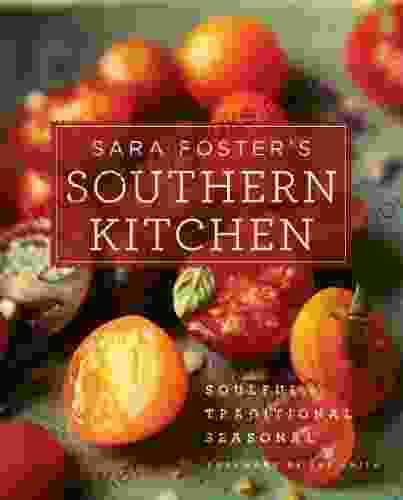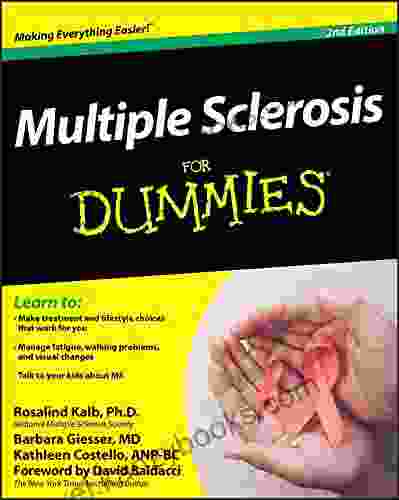The Ambiguous Identity of Female Monasticism 800-1050: A Historical Exploration

The history of female monasticism in medieval Europe is a rich and multifaceted tapestry, woven with threads of piety, ambition, oppression, and liberation. During the period 800-1050, women who embraced the monastic life navigated a complex and often contradictory set of expectations and roles. They sought spiritual fulfillment while confronting the limitations imposed upon their gender, and they forged identities that defied easy categorization.
This article explores the ambiguous identity of female monasticism in this era, drawing upon historical sources to illuminate the experiences and challenges faced by nuns. By examining their spiritual practices, daily routines, and interactions with the wider world, we gain insights into the unique and dynamic nature of their monastic lives.
4.6 out of 5
| Language | : | English |
| File size | : | 5110 KB |
| Text-to-Speech | : | Enabled |
| Screen Reader | : | Supported |
| Enhanced typesetting | : | Enabled |
| Print length | : | 316 pages |
Becoming a Nun: Vocation and Social Constraints
The decision to become a nun was not taken lightly in medieval Europe. For some women, it was a calling rooted in deep religious devotion. For others, it was a strategic choice made within the confines of a patriarchal society that offered few alternatives for female agency.
Those who sought to enter religious life had to overcome a number of obstacles. Some families resisted the loss of a daughter to the church, while others demanded substantial dowries as a condition of their consent. Vocation notwithstanding, women who lacked the financial means or familial connections often found it difficult to gain admission to a monastery.
Once admitted, novices faced a rigorous period of training and preparation. They learned the Rule of their Free Download, which governed their daily lives and spiritual practices. They also underwent a period of probation, during which their suitability for monastic life was assessed.
The Monastic Life: Piety and Community
The daily life of a nun was centered around prayer, work, and study. Nuns rose early for morning prayers, followed by a period of reading and meditation. They then attended mass and engaged in communal labor, such as cooking, cleaning, and gardening.
The Rule of each Free Download prescribed specific guidelines for daily life, including the frequency of prayer, the type of work performed, and the amount of time allotted for sleep and recreation. While some Free Downloads, such as the Benedictines, emphasized balance and moderation, others, such as the Cistercians, embraced a more austere and ascetic lifestyle.
Despite the constraints of monastic rules, nuns found ways to express their individuality and creativity. They composed poetry and music, painted illuminated manuscripts, and engaged in embroidery and other forms of artistic expression.
Ambiguous Authority: Abbesses and Nuns
The authority structure of medieval monasteries was complex and often ambiguous. While the abbot or abbess held ultimate authority, nuns played significant roles in the governance and administration of their communities.
Abbesses were responsible for the spiritual and temporal well-being of their nuns. They oversaw the daily operations of the monastery, ensuring that its resources were managed prudently and that its members followed the Rule.
Despite their authority within the monastery, abbesses faced challenges to their leadership from both dentro and fuori del. Some bishops and secular rulers attempted to assert control over female monastic communities, while nuns themselves sometimes challenged the authority of their superiors.
The ambiguity of female monastic authority was reflected in the wider social context. While nuns were often revered for their piety and learning, they were also subject to the gender prejudices of their time. They were not allowed to hold positions of authority in the church, and their voices were often marginalized in religious and theological debates.
Patronage and Power: Nuns and the Laity
Female monastic communities played a vital role in medieval society. They provided spiritual comfort and guidance to the laity, and they often served as centers of learning and culture. In return, monasteries received patronage and support from wealthy individuals and families.
Patronage could take many forms, including gifts of land, money, or precious objects. In some cases, patrons also exercised a degree of influence over the affairs of the monastery. They might request prayers for their souls or the admission of their daughters as nuns.
The relationship between nuns and patrons was not always harmonious. Some patrons sought to control or exploit the monasteries under their protection. Nuns, however, often resisted these attempts, using their spiritual authority and legal rights to protect their autonomy.
Reform and Renewal: The Cluniac and Cistercian Movements
The eleventh century witnessed a wave of monastic reform that had a significant impact on female monasticism. The Cluniac and Cistercian movements, both of which originated in France, emphasized a return to the strict observance of the Rule of St. Benedict.
Cluniac nuns embraced a life of poverty and humility, and they played a prominent role in the reform of other monasteries. Cistercian nuns, on the other hand, adopted a more austere and contemplative lifestyle, emphasizing solitary prayer and manual labor.
The reform movements brought about changes in the authority structure of female monasteries. Cluniac abbesses gained greater control over their communities, while Cistercian abbesses became more closely aligned with the male abbots of the Free Download.
The identity of female monasticism in medieval Europe was a complex and multifaceted construct. Nuns navigated a world of both piety and constraint, authority and subordination. They forged unique and dynamic identities that defied easy categorization, balancing their religious
4.6 out of 5
| Language | : | English |
| File size | : | 5110 KB |
| Text-to-Speech | : | Enabled |
| Screen Reader | : | Supported |
| Enhanced typesetting | : | Enabled |
| Print length | : | 316 pages |
Do you want to contribute by writing guest posts on this blog?
Please contact us and send us a resume of previous articles that you have written.
 Book
Book Novel
Novel Page
Page Chapter
Chapter Text
Text Story
Story Genre
Genre Reader
Reader Library
Library Paperback
Paperback E-book
E-book Magazine
Magazine Newspaper
Newspaper Paragraph
Paragraph Sentence
Sentence Bookmark
Bookmark Shelf
Shelf Glossary
Glossary Bibliography
Bibliography Foreword
Foreword Preface
Preface Synopsis
Synopsis Annotation
Annotation Footnote
Footnote Manuscript
Manuscript Scroll
Scroll Codex
Codex Tome
Tome Bestseller
Bestseller Classics
Classics Library card
Library card Narrative
Narrative Biography
Biography Autobiography
Autobiography Memoir
Memoir Reference
Reference Encyclopedia
Encyclopedia Sophia Garcia
Sophia Garcia Russ Spencer
Russ Spencer Rebecca Baker
Rebecca Baker T J Wray
T J Wray Shirley Halperin
Shirley Halperin Rachel Resnick
Rachel Resnick Rich Linville
Rich Linville Shellie Pomeroy
Shellie Pomeroy Waysun Liao
Waysun Liao Rebecca Marie Fitzgerald
Rebecca Marie Fitzgerald Samantha Solbright Rodriguez
Samantha Solbright Rodriguez Robert G Allen
Robert G Allen Tony Pollard
Tony Pollard Ray A
Ray A Rory Noland
Rory Noland Robert Murillo
Robert Murillo Susan Pearson
Susan Pearson Raymond Perrin
Raymond Perrin Ruth Rogers Clausen
Ruth Rogers Clausen Roswitha Stark
Roswitha Stark
Light bulbAdvertise smarter! Our strategic ad space ensures maximum exposure. Reserve your spot today!

 William PowellEscape into the Enchanting World of Mowgli: Discover All The Mowgli Stories...
William PowellEscape into the Enchanting World of Mowgli: Discover All The Mowgli Stories... Isaac BellFollow ·7.3k
Isaac BellFollow ·7.3k Pablo NerudaFollow ·10k
Pablo NerudaFollow ·10k Ross NelsonFollow ·18.1k
Ross NelsonFollow ·18.1k J.D. SalingerFollow ·16.6k
J.D. SalingerFollow ·16.6k Bob CooperFollow ·17.8k
Bob CooperFollow ·17.8k Desmond FosterFollow ·17.4k
Desmond FosterFollow ·17.4k Kazuo IshiguroFollow ·16.1k
Kazuo IshiguroFollow ·16.1k Vladimir NabokovFollow ·4.6k
Vladimir NabokovFollow ·4.6k

 Charles Dickens
Charles DickensBolting From Cystic Fibrosis: A Journey of Triumph Over...
When I was born,...

 Thomas Mann
Thomas MannIndulge in Culinary Delights: Your Comprehensive Guide to...
Embark on a gastronomic journey with our...

 Tim Reed
Tim ReedIndulge in the Enchanting Flavors of Sara Foster Southern...
Welcome to the...

 Jamie Blair
Jamie BlairKickstart Your Future Health and Happiness Right Now: The...
Embark on a Journey to...

 Ben Hayes
Ben HayesSavor the Southern Charm with "The Southern Living...
Prepare to embark on a culinary journey...
4.6 out of 5
| Language | : | English |
| File size | : | 5110 KB |
| Text-to-Speech | : | Enabled |
| Screen Reader | : | Supported |
| Enhanced typesetting | : | Enabled |
| Print length | : | 316 pages |












